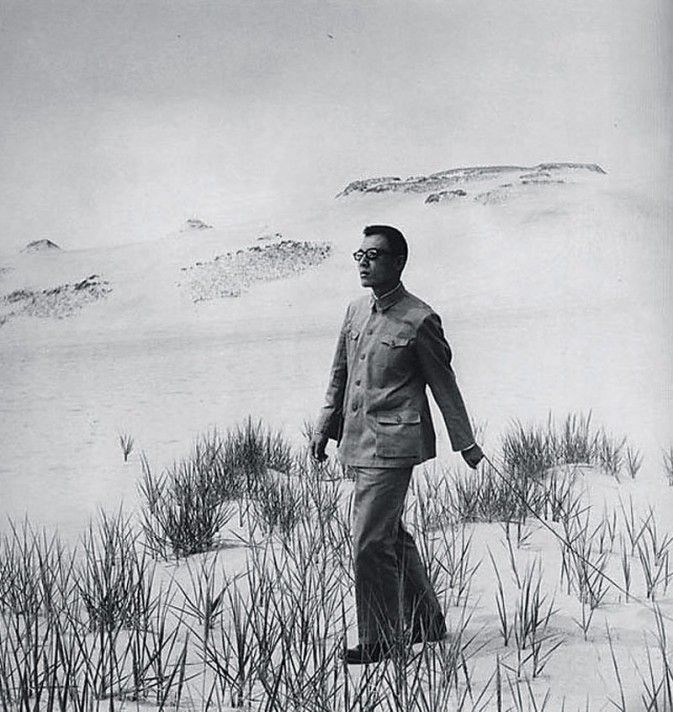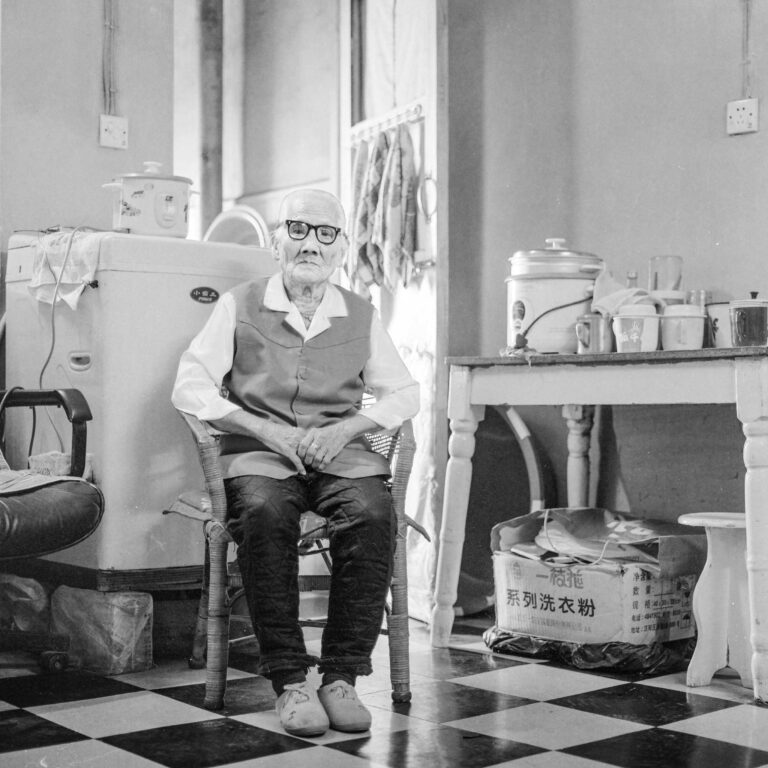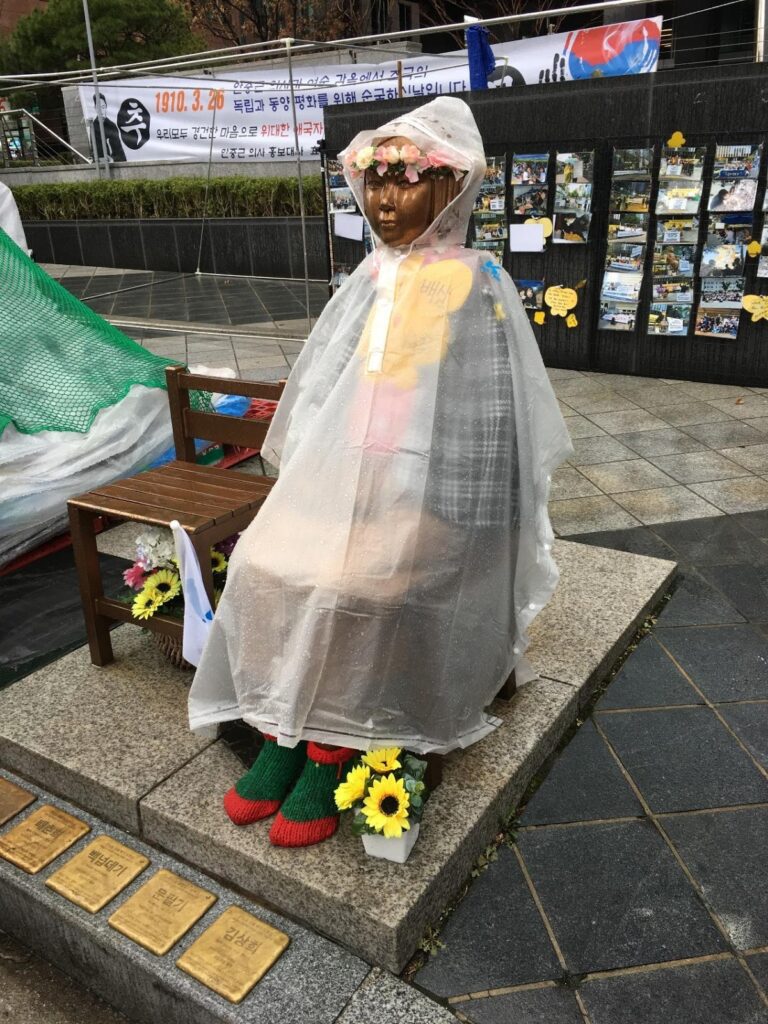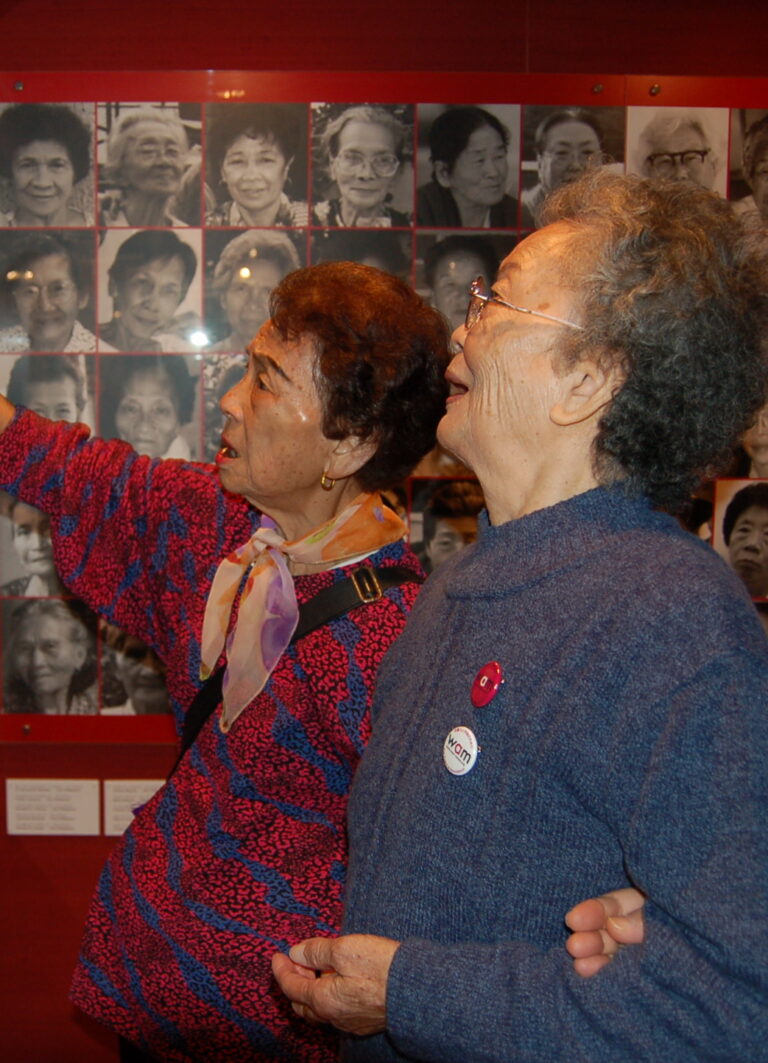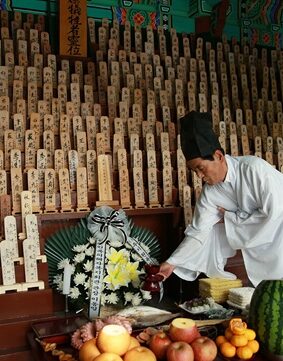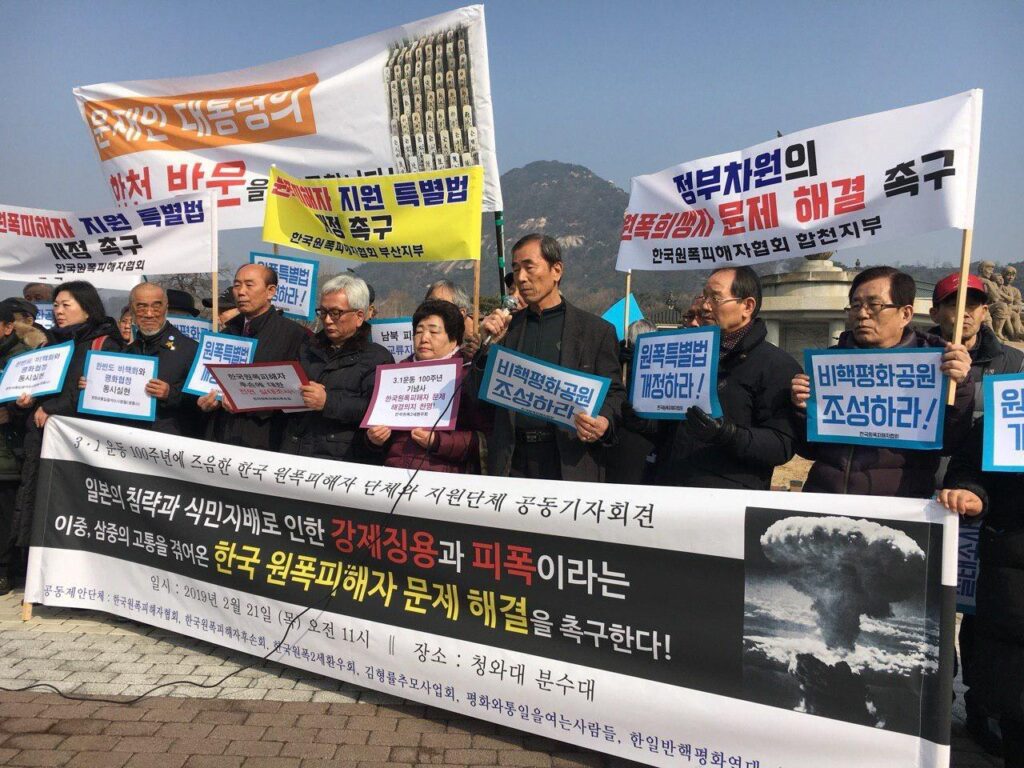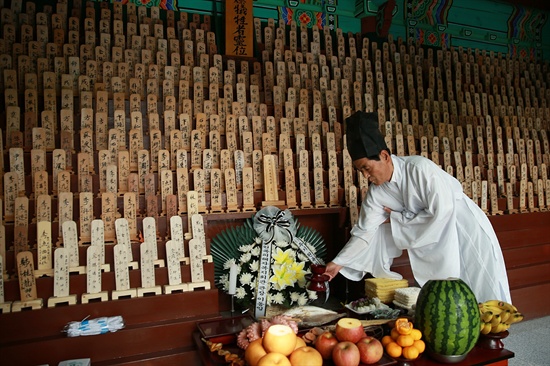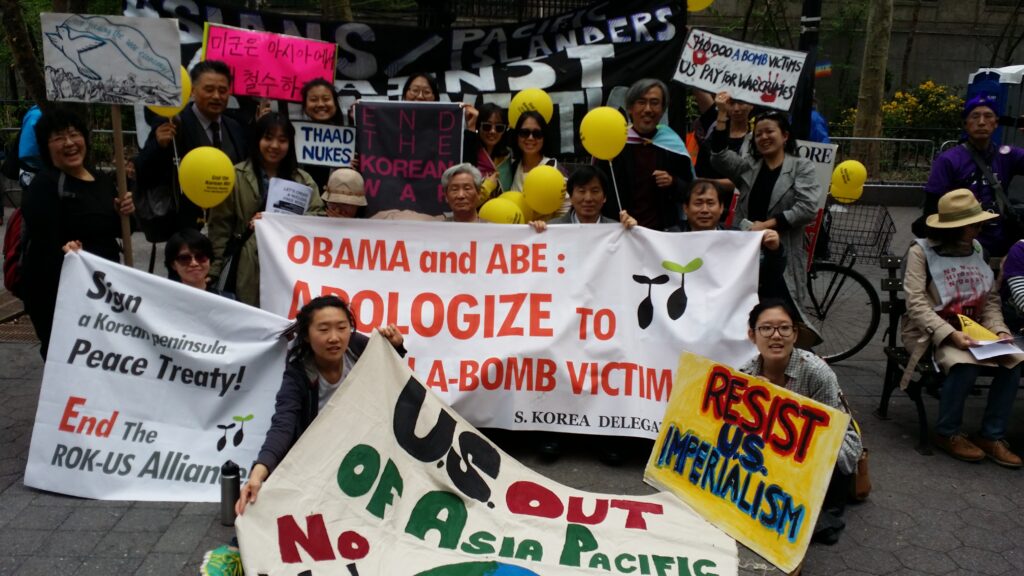In recent years, each time a mixed-race Chinese-African person went viral on social media, a nationalist uproar erupted online. A mixed-race Chinese-African child and intermarriage between Chinese and Africans have come to symbolize anxieties over “Chineseness.” Undergirding these anxieties is the social imaginary of the “endogamous family” (同族家庭) founded upon heteropatriarchy. The intermarriage between a dark-skinned non-Chinese man and a Han-Chinesewoman is therefore seen as a violation of “Chineseness” and an affront to the national-reproductive community. Moreover, Africans are often pathologized in supposedly scientific literature on the HIV/AIDS pandemic and are therefore scapegoated as sources of contamination of the Chinese national-reproductive community. This article explores how Chinese racial-nationalism, ideologies of sex and gender, and the biopolitics of disease prevention combine to form the affective and discursive justifications for contemporary Chinese anti-Black racism.
Mixed-race Chinese-African Children and the Dilemma of Interracial Marriage
In his Miscellaneous Notes of Yanpu, Zhao Yi (1727-1814), a writer during the Qing dynasty (1644-1911), recorded the folklore he heard circulating in Guangdong province on the southern coast of China. One of the entries introduced readers to non-Chinese groups distinguished by skin tone. They were given such labels as “white devils,” “black devils,” and “red-haired barbarians.” Zhao Yi’s narrative indicates that the colorist racial hierarchy constructed through oceanic slave trades had already become a salient epistemic framework for Chinese people to distinguish between inferior and superior groups of foreigners. Historical violence was disguised as a seemingly objective natural order: “Whites are the masters, Blacks are the slave; the noble and the base are determined from birth.”1
One of Zhao Yi’s main concerns were marriages between Han-Chinese and “barbarians” in Guangdong. In particular, he recorded a tale of a Black slave and a Cantonese indentured servant-girl that carried tragic overtones reminiscent of Othello: “A family purchased a Black slave and coupled him to a Cantonese indentured servant-girl, from which a child was born. Some teased the Black slave, ‘As a black devil, your son should be black like you. But your son is white, how can he be yours?’ The black slave began to doubt whether his son belonged to him. Brandishing a knife, he cut open his son’s shin. Thereupon he discovered that the exposed bone was completely black. He immediately broke into sobs of grief. It was only then he realized that his son’s bones were inherited from the father, but his flesh came from the mother.”2
This tale recounts the violence inflicted on a mixed-race child by his own father. Similar to Shakespeare’s Othello, the story involves a dark-skinned man living in a colorist society. After being paired with a light-skinned woman, he hears rumors that lead him to doubt his partner’s faithfulness and their child’s legitimacy — so much so that he inflicts violence on his own kin. Those who spread malicious gossip, on the other hand, can easily absolve themselves of responsibility, laying blame instead on the father who had lost control and became violent. As individuals internalized existing social hierarchies based on skin tone and race, the foundation of this tragedy is already staunchly set in place. In the story, the man’s discovery that the bones belong to the father and that they are completely black lends the tale a dramatic twist. By symbolically returning the dead child to the father, the story highlights how unnecessarily jealous the man had been when he committed this lethal mistake. As a Black man stigmatized in a colorist society, he revolts violently against his marginalization, and inevitably commits a self-fulling prophecy: his act reinforces the racist myth that dark-skinned men are prone to violence.
The main difference between this story and Othello lies in the key role played by skin color as a supposedly hereditary trait. In the Chinese tale, the gossip centers on the baby’s skin color that functions as the psychological source of the man’s anxieties over his partner’s infidelity and ostensibly provides the physical proof thereof. The focus on inherited traits reveals a deep-seated social imaginary that views the child—the product of heterosexual reproduction—as necessary to extend one’s own lineage. By highlighting the tragic outcome of a mixed-race family, this story symbolically disavows the possibility of extending one’s lineage through interracial marriage in a racist society. At the end of the tale, when the father discovers the “fact” that his son’s bones were black, the rhetorical boundaries of inside vs. outside and depth vs. surface are crossed. The story, hence, reaffirms biological determinism. While this racial tragedy cannot end with the common trope of a reunited happy family , the revelation of the son’s inheritance from his father nevertheless provides the emotional catharsis by fulfilling the heterosexual familial ideal.
The dark-skinned man is marginalized, mocked, and deceived not because he is an “outsider” of that society. Rather, it is only because he is already a member of this society that he can then be marginalized. It is precisely because he can communicate with the gossipers that he becomes ensnared by malicious rumors. It is also precisely because he and his partner have produced a child that the rumors can cast doubt on his family. That is to say, racial marginalization does not stem from any natural, objective, or unbridgeable differences between oppressed groups and the dominant society. Rather, it stems from a collective imaginary that sees the society as an intimately connected organic whole: the racialized Other must therefore be separated from this imagined organic unity. Skin color is deployed as a tool to bring this imaginary into reality.
As scholars of Macau history Tang Kaijian and Peng Hui have pointed out, historical sources from Ming and Qing eras recorded instances of Black and mixed-race children being abandoned and left at Macau’s Holy House of Mercy (also called the “Orphans’ Temple” at the time). This reveals the long history of transnational and inter-racial reproduction in Chinese society. The two-centuries’ old tale of the Black slave murdering his son serves as proof that during, or even prior to, the expansion of European colonialism, racial hierarchies based on colorism had already traveled transnationally and dwelled in the social consciousness of people in East Asia.3 The tale also acutely articulates the crucial roles sex, reproduction, and family play in constructing racialized communities.
The abandonment of Black and mixed-race children in the late-Imperial era highlighted the marginalized status of their parents who could not enter into formal institutions of marriage and build stable households. By contrast, the controversy surrounding Lou Jing, a young mixed-race woman of Chinese and African-American parents who appeared on Shanghai’s Dragon Television’s variety show Let’s Go! Oriental Angel demonstrated that for Chinese netizens, colorism informs how they define Chinese identity. Studying the case of Lou Jing, Robeson Taj Frazier and Lin Zhang argue that the controversy reflected anxieties regarding “who can be Chinese, who can produce Chinese children, what kinds of interracial relationships are acceptable for Chinese women, and the impact of foreign immigration by people of African descent into China.”4 If Black and mixed-race children of the late-Imperial era were excluded from the collective social network of the traditional family, then the online attacks on Lou Jing and her mother revealed how they were symbolically excluded from social acceptance in the public mediasphere. The absence of Lou Jing’s Black father and her mother’s status as a single mother combined with Chinese netizens’ increasingly fanciful speculations about her family appeared to confirm racist myths about Black masculinity and broken interracial families. But in actual fact the controversy brought attention to the real challenges facing many Chinese-African families in building stable households.
In her research on marriages between Chinese and Nigerians in present day Guangdong province, Shanshan Lan has shown that many of the problems these couples face are due to the social immobility of the Nigerian husbands, the social isolation of the Chinese wives, and long term separations between the two due to visa policies. The women in these marriages are often migrant workers without a proper hukou status in the city they live and work in. They thus lack many of the social resources available to other women with proper hukou. Because of visa issues, Nigerian men often try to stay in China for as long as they can, justifiably fearing that once they leave Chinese borders they will be unable to return. In both their romantic relationships and in their business partnerships with each other, Chinese-Nigerian couples are constricted by systems designed to control “non-natives” (including both Chinese and non-Chinese migrant populations). Because the non-Chinese spouses of Chinese citizens are often unable to obtain long-term residency status, many of them can only rely on the constant renewal of short-term visas in order to stay in China. The short-term visas given to non-Chinese spouses do not allow them rights of employment. These visas are also unavailable to non-Chinese partners who, due to the lack of proper documentation, are unable to register their marriage in China. For non-Chinese partners who do manage to obtain marriage registration, they are not always eligible either for a visa extension. As a result of so many unfavorable conditions that work against forming long-lasting, stable families in China, many African men who come to China for business tend to enter into temporary romantic relationships. These relationship patterns and unstable families are largely caused by policies of social control. However, many Chinese people attribute them to existing negative stereotypes against African men. It further marginalizes these African men and their Chinese partners in Chinese society.
Nation as a Racial Community: Imagining Social Unity in the Image of the Endogamous Family
In biological taxonomy, the notion of “species” has long included a sexual dimension. As early as the 18th century, French naturalist Buffon (Georges Louis Leclerc, Comte de Buffon 1707-1788) in his Histoire naturelle, générale et particulière, defined “species” as the following: “a species was a constant succession of similar individuals that can reproduce together.”5 Afterwards, even as this definition evolved, it never deviated from the requirement that a species be capable of mating and propagating a new generation itself capable of reproduction. Hence, the species is a basic unit for reproduction. Between one species and another was reproductive isolation. Even after scientific racism was disavowed and Homo sapiens was thereafter defined as a common species, gender, family, and reproduction remain contentious terrains—they are often mobilized to distinguish one’s status as an insider or outsider of a society. In other words, precisely because humans can reproduce with one another, communities have to rely on social systems and cultural attitudes to regulate and police intimate relationships.
Etienne Balibar has further pointed out the links between racism, nationalism, sex, and gender. Balibar argues that racism almost always informs the construction of nationalism: nationalism and racism have historically functioned in concert and racism has time and again been borne out of nationalism. Gender and sex, including the gendered division of labor and sexual relations, are also intimately connected with racism. Racism and sexism often function in tandem with one another. Balibar claims that the biological logic of racism is not a simple affirmation of biological principles, nor is it an application of biological sciences to the study of society. Rather, it is a “vitalized metaphor” for gendered and sexualized social values. These values include, on one hand, energy, decisiveness, initiative, and virile representations of domination; and on the other hand, passivity, sensuality, and femininity. They also encompass the imaginary of social cohesion based on notions of the “endogamous family.”6
The imagined social cohesion rooted in the trope of the “endogamous family” is thus intrinsic to nationalism. As a constructed narrative, nationalism relies on the imagined unity and historical continuity of the subject (the “nation”). Nationalism perpetuates the belief that a social group has been living in the same geographical territory for generations, and that they have been passing down unchanging traits from one generation to the next; as a result, this group of people can be referred to as a singular, unified subject. Based on the assumption of a singular subject that possesses historical continuity, the construction of nationalism depends on an orientation towards futurity. An emphasis on futurity drives the assumption that everyone in the nation shares a common destiny, which is in turn passed down to the offspring they produce. Since the nation’s future is tied to reproduction, there is a strong emphasis on making sure that people are continuously reproducing and passing down shared traits to promote a robust progeny.
In other words, within the narrative of nationalism, the relationship between temporality, gender, family structure, and reproductive norms are closely related. Balibar suggests that the nation-state has not at all ceased to emphasize premodern political systems’ concern with bloodline. Rather, it has taken “normal” and “natural” relations of endogamy from smaller arenas, such as family, territory, and social strata, and expanded them to encompass the field of “national kinship.” That is to say, there is no significant social factor that inhibits people from coupling with others from the same nation; conversely, this type of marriage is seen as the most normal and natural form of constructing a family. Within the frame of the nation-state, the private sphere of the family is continuously subjected to state control and is thus incorporated in the process of nation-building. The family becomes the social unit that continuously reproduces labor and kinship ties.
Within this structure of an imagined national community based upon the notion of the “endogamous family,” migration (including immigration and emigration) and intermarriage become the twin mechanisms that challenge the community’s borders. The recent controversies surrounding questions of residency rights for non-Chinese have demonstrated how nationalism employs the social metaphor of the “endogamous family” in order to racialize reproductive politics and to gender and sexualize racial issues. This February, a draft bill titled “Regulation of Permanent Residency for Foreigners” elicited waves of opposition online. The new rules aimed to relax China’s stringent immigration policies, broaden the criteria for foreigners to acquire permanent residency, and protect the rights of such permanent residents. However, netizens’ expressions of outrage swamped the bill’s comment section on Weibo and eventually pushed the policy makers to suspend the bill’s further consideration.
While some of the critical comments were motivated by economic concerns regarding wealth distribution, others were explicitly or implicitly xenophobic and racist. The idea of relaxing border control instigated collective nationalist paranoia targeted at certain imagined figures of foreigners, whose inclusion, some claimed, would threaten both the survival and development of the national body. Many commentators deployed a strong sense of victimhood by calling forth a “we” distinguished from a “they” that threaten “our” values and wellbeing. One anti-immigrant argument that gained traction among Weibo users concerned the “sacrifice” made by Han-Chinese parents and their aborted babies due to China’s family planning policy. Many commentators composed or reposted comments that condemn the bill’s “betrayal” of the Chinese people on the grounds that Han-Chinese have been subjected to stringent reproductive restrictions “for the past four decades.” Admitting immigrants would mean betraying the “400 million unborn babies who sacrificed their lives for family planning” and the Han-Chinese couples who up to now still face exorbitant fines and risk unemployment if they bear an extra child.
The comparison between immigrants’ “gain” at the expense of the purported “harm” to Han-Chinese couples and their aborted babies highlighted the extent to which the racial-national body is conceived as a reproductive community in the image of the endogamous family. The immigrant was viewed as taking advantage of the “absence” left by the collective national progeny that did not make it to childbirth. Admitting the immigrant thus became an offense against the “legitimate” couples who withheld or were denied the right to bear more children. The comparison of immigrants with the unborn babies “sacrificed” for state policy was made possible by nationalizing the historical trauma suffered by some families, transforming the trauma into a necessary evil for the sake of the national body as a whole. The figure of the immigrant, construed as biologically unrelated to the national-reproductive community, was excluded from claiming a legitimate position within the imagined national body predicated on reproductive futurity.
To further preempt the incorporation of non-Chinese immigrants into this national-reproductive community, anti-Black racial-nationalist discourse made use of the immigrant-as-rapist stereotype. These commentators selectively cited reports of crimes committed by African men in China (sometimes linking them to the racist myth of crime-prone African Americans translated from U.S. sources), and exposed private photos of Chinese-African couples as visual evidence to prove how Black men seduce and violate Chinese women. In these cases, non-Chinese men were regarded as sexual predators and threats to Chinese women, and competitors for sexual and reproductive resources (e.g. women’s bodies and fertility) with Chinese men. Similar episodes can be traced to the nationalist panics of the 1980s centered on the friction between African and Chinese students on Chinese university campuses in which anti-African protestors proclaimed the need to “protect Chinese women.”7
Biological racism thus became the baseline for excluding “male foreigners” while subjugating women. Favoring the trope of “invasion,” racism based on biologism suggested the threat to a community that comes from the outside. These external threats always exhibited the desire to invade and attack, as well as the desire to seize and compete for the Chinese race’s space for survival and development. The metaphor of “invasion” on the one hand feminized the idea of “the nation” as a woman’s body. Geopolitical threat, hence, was seen as a violation of Chinese women. On the other hand, the relations between non-Chinese men and Chinese women were seen as a violation of the reproductive endogamy of the Chinese race. As non-Chinese men were collectively imagined as a threat to Chinese women, Chinese men thus claimed the right to possess Chinese women in the name of protecting them. Problems of gender that emerged in intercultural families were “externalized” as the problem of “the invasion of foreign races.” Unlike the zero-sum game that defined the population calculus of immigrants vs. unborn babies, these racial imaginaries were articulated through the gender divide and sexual policing that reflect and defend the structures of hetero-patriarchal racial-nationalism.
Similarly, nationalist heteropatriarchy also manifested itself in the notion of “Chinese men” possessing “non-Chinese women.” Quite a few Chinese proponents of anti-Black discourses only opposed letting non-Chinese men “seize” Chinese women. However, they did not oppose, and at times even welcomed, the idea of Chinese men possessing non-Chinese women. The ultra-nationalist blog Yanhuang zhijia (the Home of Yan-Huang, referring to the two mythic ancestors of the Han people) was a staunch opponent of the proposed revision to China’s permanent residency laws, claiming that “if the one-child policy is a war of extermination, granting permanent residency to foreigners signals its triumph.” But in their own proposed revisions, they were in favor of discrimination based on the principle of “One Encouragement, Three Prohibitions,” which included the following provisions: “Non-Chinese women who marry Chinese (men) should be granted residency; the more children they bear, the shorter their wait time; residency should be denied to non-Chinese men who marry Chinese women as well as their children.” Nationalism and racism’s construction of gender thus produced its own perfect mirror image: protecting the “benefits of the nation” lay in allowing Chinese men to “enjoy” the sexuality and reproductive resources of both Chinese and non-Chinese women. In contrast, the very same logic justified the expulsion of non-Chinese men who would “seize” Chinese women and produce mixed-race children.
The racial metaphors and sexual discipline of infectious disease
The anxieties triggered by relationships between non-Chinese men and Chinese women were nested within an existing hierarchical understanding of racial difference. The racialized discourses about different “foreign men” were always grafted onto a larger system of racialized knowledge. The gendered and sexualized racial discourses of the “Black man” were no exception. The myth of the Black man as hypersexual and prone to violence was not confined to China, but instead had circulated in Europe, the US, and European colonies since the transatlantic slave trade. These myths were formed by Whites who enslaved and exploited Black bodies and their (sexual) labor. These myths, in turn, were mobilized to sustain systems of racial exploitation. For example, the film The Birth of a Nation glorified the Ku Klux Klan for controlling violent Black men who threatened to rape white women. But the extreme inverse of this image was that of the asexual, obedient Black servant, such as Uncle Tom in Harriet Beecher Stowe’s famous novel, or the “Mammy” character in Gone with the Wind. These myths sustained White supremacy and anti-Black violence by condoning White-on-Black crimes committed on the slightest suspicion or false claims of Black transgression of White space and White women’s safety.8
The racialized rhetoric of infectious disease provides another seemingly scientific basis for the racist metaphor of the “invasion” of the dark skinned non-Chinese man. Locating the source of infectious disease in the body of the Other is the racist norm. Before the rapid spread of COVID-19 in Europe and the US, the “bat-eating Chinese” and the “mask-wearing Asians” became the racialized target of both verbal and physical assaults. But in China, the long standing media narrative which pathologized dark-skinned non-Chinese became part of the latent collective consciousness. Before the violent eviction of African residents in Guangzhou during the COVID-19 pandemic, the misplaced connections between HIV/AIDS and Africans had already occupied a prominent place within the racial-nationalist discourse, and functioned in coordination with heteropatriarchy’s regulation and discipline of gender and sexuality.
Johanna Hood, a scholar who studied how Chinese media portrayed the HIV/AIDS epidemic, discovered the Chinese media’s tendency to exoticize the disease. Since the 1980s, the vast majority of media sources have informed Chinese audiences that those afflicted with HIV/AIDS were primarily non-Chinese. Among these non-Chinese people, black Africans were disproportionately featured. The image of typical HIV/AIDS sufferers were impoverished populations of rural Africa. Moreover, they were often portrayed as having become infected through engaging in deviant sexual or social behaviors. Such portrayal in turn affirmed the racist assumption that Africans were “primitive,” “backwards,” and being “proximate” to the non-human sources of the disease, i.e. African primates. The visual portrayal of HIV/AIDS’ physical symptoms often zeroed in on images of minimally clad Black people afflicted by the disease—the visible, exposed dark skin became closely associated with the disease’s manifestations.
In contrast, when the media portrayed HIV/AIDS in Chinese cities, these Chinese patients usually appeared healthy and dressed in normal attire. Media tended to emphasize that they had already received treatment. By relentlessly focusing on Africans as disproportionately representing the carriers of HIV/AIDS, Chinese media reinforced the racist impression that African and Black people were responsible for accelerating the transmission of disease. African and Black people’s bodies were portrayed as particularly vulnerable to infection and as a pathological conduit capable of high transmissibility. The racialization of HIV/AIDS was at the same time a gendered and sexualized process: the reproductive capacity and the sexual relations of African and Black people were simultaneously subjected to racialization and pathologization.
Hood’s research also explored the formation of women’s role in China’s anti-HIV/AIDS campaign. By emphasizing mother-child transmissions as a major source of HIV/AIDS infection in Africa, Chinese media bolstered the stereotype of African women as “bad mothers” who bore too many children but could not guarantee their children’s health. The image of African women as “bad mothers” served to contrast the image of Chinese urban women as “good mothers” who, under the family planning policy, were able to maintain their health and take care of their children. However, this positive image of Chinese mothers relied upon a hidden discipline over women’s bodies, sexuality, and “suzhi” (quality). The sexuality of women during their reproductive years (including sexual behavior, sexual relations, and reproductive capacity) required restriction and regulation in order to guarantee the population’s quality and the nation’s future. The undisciplined and deviant woman’s body was thus seen as a vector of pathological transmission, and threatened the well-being of both the family and the nation. As a result, women’s bodies, their reproductive capacity, and their sexual behavior became the object of state control in nationalist discourse.
Nationalist sentiments that lurked behind the biopolitical controls taken during public health crises led to histrionic outrage about intimate relationships between African/Black people and Chinese people. Distinct from Hood’s focus on the role of African women, Chinese online nationalism mainly targeted Black men and Chinese women’s relationships. Black women were nearly absent in this conversation. In these discourses, African/Black men were seen as competing with Chinese men, and were illegitimately benefiting from possessing the limited resource of Chinese women. In addition, African/Black men were regarded as the “prime culprit” for the transmission of HIV/AIDS among Chinese women and in Chinese society in general. Nationalist masculine anxieties were thus projected upon the bodies of non-Chinese men and enmeshed with the racialized social discourse of disease prevention. The authority of the supposed “scientific objectivity” of disease prevention discourse provided legitimacy to these hetero-masculine anxieties.
But nationalist attitudes toward Black men who date Chinese women carried further ambiguities. On one hand, Chinese women were treated as the real or potential victims of Black men’s hypersexual desire. Their victimization led them to become vectors of disease transmission. Their “silent suffering” justified the denunciation of Black men in online nationalist discourse. On the other hand, Chinese women who had intimate relations with Black men were also seen as promiscuous, deviant, and therefore did not deserve sympathy. Their behavior was viewed as irresponsible toward both themselves and society. They were also seen as potential carriers of disease, thus posing a threat to the health of Chinese men. Thus, they had to be distinguished and then disqualified from being desirable romantic partners for Chinese men.
But Chinese anti-Black discourses’ maintenance of heteropatriarchy also had to rely upon Chinese women’s consent and cooperation. In other words, the successful operation of racial-nationalist heteropatriarchy required that women willingly subject themselves to social and sexual discipline. In online anti-Black discourses of recent years, quite a few commentators modeled themselves upon stock images from online historical romance novels in order to demonstrate how Han-Chinese women should “freely” choose marriage with Han-Chinese men.
What follows are examples of such expressions: “Chinese women will save themselves for a perfect wedding with a Chinese groom while dressed in crimson Chinese robes.” “Either a crimson dowry of ten li, or a white cloth of three feet.”9 “My ultimate life’s wish is to marry a Chinese man while dressed in full bridal robes and being transported in a grand sedan carried by eight men. I swear on my life to never marry a non-Chinese man. In fifteen years I’ve never once known a black flower to be among the fifty-six flowers.”10 These comments on behalf of single women promoted images that romanticize female martyrdom for the sake of both nation and true love. They employed traditional Chinese symbols of aristocratic bridal customs in order to express their vision for an ideal marriage. Their identification with these traditional Han images was deeply entangled with erotic desires, a sense of national identity, and an idealized gender role. Such entanglements constituted strong affective motivations for Chinese women to marginalize non-Chinese people.
Concerns revolving around Chinese women’s “free” choice of intimate partner can be seen in the controversial television advertisement for Qiaobi laundry detergent in 2016 that featured a Chinese woman about to do the wash at home. An attractive, young Black man doing house painting unexpectedly appears in the doorway, wearing a white T-shirt riddled with paint stains, and attempts to seduce her. Right before they kiss, the woman suddenly stuffs a detergent pod into his mouth, pushes him into the washing machine, and turns it on, leading to the man’s audible shrieks of agony. After being “washed clean,” he emerges, but has transformed into an attractive, light-skinned Asian man to the woman’s gleeful delight. His T-shirt, once stained, is now sparkling white. The advertisement suggested that one should wash off blackness in the same way one would remove a clothing stain. The advertisement moreover used the racial rhetoric of cleaning clothes until they are “sparkling white” [xibai, i.e., spotless] to demonstrate the effectiveness of its product.
But the advertisement’s racism concealed even deeper-seated ideas about gender: a capable Chinese woman (most importantly, capable of doing housework) should go out of her way to choose a light-skinned (Han) Chinese man to be her partner. He would always be a more appealing partner than a Black man. The advertisement thus dramatized the agency granted to Chinese women in selecting a partner. However, Chinese women were shown to exercise such agency only insofar as they were tied to a specific role, i.e., the young wife responsible for household chores, thus affirming the typical division of labor under heteropatriarchy. A “better” male partner (i.e., a “clean,” light skinned Chinese/East Asian/Han man”) becomes the “reward” for a young woman who assumes responsibility for housework. If the discourse of “female martyrs” on Weibo dramatized a nationalist version of chastity by romanticizing self-sacrifice for both nation and true love, Qiaobi’s advertisement employed the liberal ideals of gender equality to promote women’s right to choose a partner endorsed by racial-nationalism.
The varying discourses about an imagined “self” and “other” were not without their internal contradictions; and yet those who held onto them made use of all sorts of sophistry in order to justify their conclusions. To borrow Taiwanese author Lin Yi-han’s words on how educated Chinese men perpetuated violence against women: “This ideology has so many cracks, but how do they manage to seal them up? They seal them up with words, rhetoric, and all sorts of metaphorical tricks, and as a result the ideology becomes impregnable.” And the imagined “others” in the racial-nationalist discourse, to borrow the metaphor by Toni Morrison, are but a dream—“the subject of the dream is the dreamer. The fabrication of an Africanist persona is reflexive; an extraordinary meditation on the self; a powerful exploration of the fears and desires that reside in the writerly conscious. It is an astonishing revelation of longing, of terror, of perplexity, of shame, of magnanimity. It requires hard work not to see this.”11
Endnotes
1 Quoted in Peng Hui, p. 173.
2 Ibid, p. 174.
3 Don J. Wyatt traced the presence of black slaves in Southern China and colorist racial consciousness in Chinese writings to the mid-imperial period (starting from around the seventh century).
4 Frazier & Zhang, p. 238.
5 Quoted in Bernasconi, p. 16.
6 Balibar & Wallerstein, p. 58.
7 Sautman, p.421; see also Cheng.
8 See Davis; and Collins.
9 The crimson dowry of ten li refers to a wedding custom whereby the bride’s dowry of furniture and other personal items are transported by a parade of carriers to the groom’s home. The “white cloth” refers to the story of Imperial Consort Yang of the Tang Dynasty. Emperor Xuanzong, under pressure from his soldiers that threatened to mutiny, reluctantly sentenced his beloved concubine to death. The “white cloth” is a reference of what was used to strangle her.
10 The “fifty-six” flowers is a reference to the fifty-six recognized ethnic minorities of China. The speaker implies that Black people are not part of the imagined Chinese nation, even among its minorities.
11 Morrison, p. 17.
Bibliography
Balibar, Étienne, and Immanuel Maurice Wallerstein. Race, Nation, Class: Ambiguous Identities. Verso, 1991.
Bernasconi, Robert, ed. Race. Blackwell Publishers, 2001.
Cheng, Yinghong. “From Campus Racism to Cyber Racism: Discourse of Race and Chinese Nationalism.” The China Quarterly, Vol. 207 (Sep 2011): 561-579.
Collins, Patricia Hill. Black Sexual Politics: African Americans, Gender, and the New Racism. Routledge, 2004.
Davis, Angela Y. Women, Race & Class. Vintage Books, 1983.
Frazier, Robeson Taj and Lin Zhang. “Ethnic identity and racial contestation in cyberspace: Deconstructing the Chineseness of Lou Jing.” China Information, 28:2 (2014), 237–258.
Hood, Johanna. “Distancing Disease in the Un-black Han Chinese Politic: Othering Difference in China’s HIV/AIDS Media.” Modern China, 39:3 (2013), 280-318.
Lan, Shanshan. Mapping the New African Diaspora in China: Race and the Cultural Politics of Belonging. Routledge, 2017.
Morrison, Toni. Playing in the Dark: Whiteness and the Literary Imagination. Vintage Books, 1992.
Peng Hui. Ming-Qing Shiqi Aomen Heiren Wenti Yanjiu [Research on Macau’s Black population during Ming and Qing dynasties], Beijing: Zhongguo Shehui Kexue chubanshe [Chinese Academy of Social Sciences Press], 2017.
Sautman, Barry. “Anti-Black Racism in Post-Mao China.” The China Quarterly, No. 138 (Jun 1994), 413-437.
Tang Kaijian, Li Changsen, and Xu Jieshun. “Aomen Tusheng Zuqun Yanjiu Sanren Tan” [Discussions about the research on the Macanese populations in Macau]. Xinan Minzu Daxue Xuebao [Scholarly Journal of Southwest Nationalities University] 25:7 (July 2004).
Wyatt, Don J. The Blacks of Premodern China. Philadelphia: The University of Pennsylvania Press, 2010.
